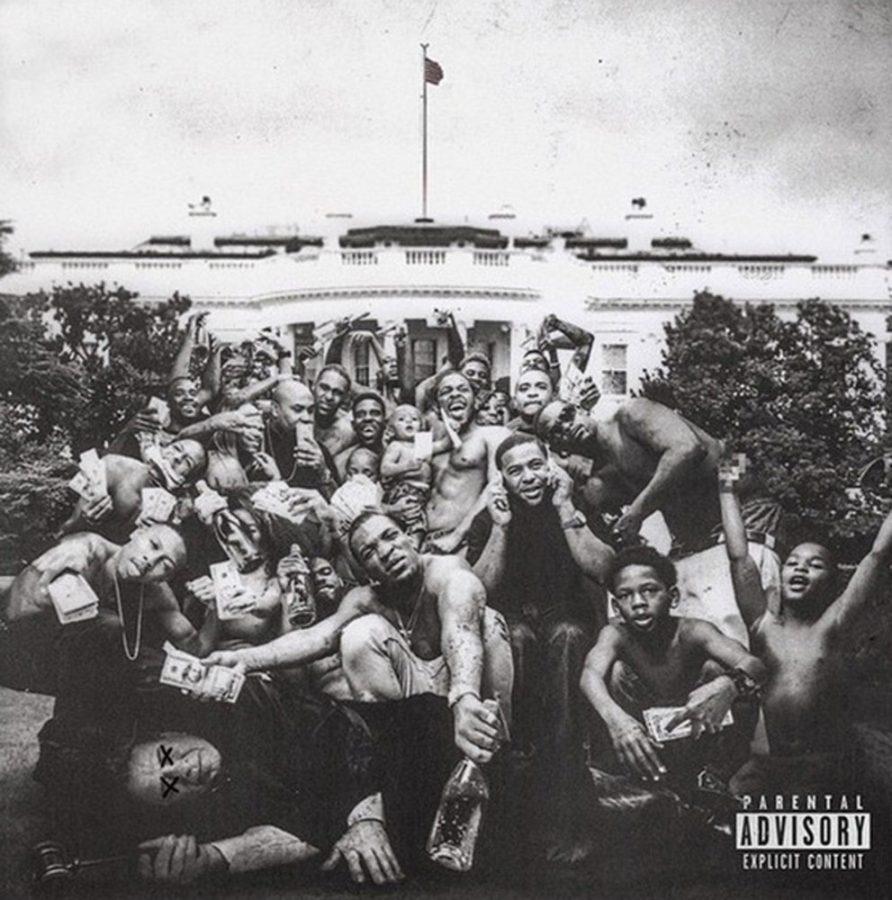It’s easy to assume everyone else has it together, to feel alone in a world where all you are capable of is “not good enough.” But the truth is, no one has a clue what they’re doing in life, and the only way to celebrate that is by being yourself. If you want to hear these sentiments, but in a more appealing manner, listen to Kendrick Lamar’s newest album To Pimp a Butterfly.
To Pimp a Butterfly proves that praise only goes so far before the Law of Diminishing Returns kicks in. Already the highest-scoring hip-hop album on Metacritic, To Pimp a Butterfly has people proclaiming it’s not only the album of the year, but perhaps the rap album of the decade.
Let’s just say if some advanced civilization in the future recovers the remnants of our society, long since dead and gone, I sincerely hope To Pimp a Butterfly is one of the first albums they listen to.
Once upon a time, say a month or so ago, I believed there was no way Kendrick Lamar could exceed his last album Good Kid, M.A.A.D. City. After such a poignant story of growing up in the streets of Compton, what story could Kendrick Lamar have to tell? The answer is To Pimp a Butterfly.
To Pimp a Butterfly utilizes the age-old metaphor of the caterpillar transforming into the butterfly. While Good Kid, M.A.A.D. City told a linear story, To Pimp a Butterfly connects songs and stories in an almost three-dimensional way. Lamar begins to read a poem at the end of each track, with each sequential line introducing the next song. The result is a poem that summarizes Lamar’s journey of coming to grips with his newfound fame and its consequences. The album ends with “Mortal Man,” a 12-minute track in which Lamar converses with pre-recorded Tupac Shakur about his poem and how to best use his influence as Tupac’s heir to the throne of hip-hop.
Lamar focuses on the dissonance between self-love and self-hatred, and the long-standing idea of “double consciousness” put forth by W.E.B. Du Bois in “The Souls of Black Folk.” Despite being the new “King” of rap, as seen in the track “King Kunta,” Lamar is still held back. “King Kunta” is named after 18th-century slave Kunta Kinte, who attempted to escape until his right foot was cut off. Whether it is from the rap culture and production companies, or the powers that be such as the government, there is always something trying to take Lamar’s legs from beneath him.
The duality and combating nature at the heart of “King Kunta” permeates every song on the album. This is a combat album: the battle of Kendrick Lamar vs. Kendrick Lamar. This most obviously comes out in “u” and “i”. “U” proves to be Lamar’s nadir, the lowest point where his self-hatred boils over as he contemplates suicide in a hotel room. Meanwhile, “i” is the mountaintop, the climax of the album’s message for positive self-love.
It’s fascinating that “i” was the first single off the album, dropped back in 2014. Lamar faced criticism for “i,” with many questioning if the rapper from Good Kid, M.A.A.D. City was gone and replaced with easily digestible pop-rap songs that stay as far away as possible from hard truths. Lamar most likely knew he would face some backlash of releasing “i” without the context of the album, but he was just living out the message of the song: Don’t let anyone else define, label or box you in. There is only one “i,” only one me and only one you. So sing it out loud and don’t pay any mind to the rest.
We might as well start singing along, because To Pimp A Butterfly is going to be played for years to come.
_______________
Follow Alex Furrier on Twitter.









